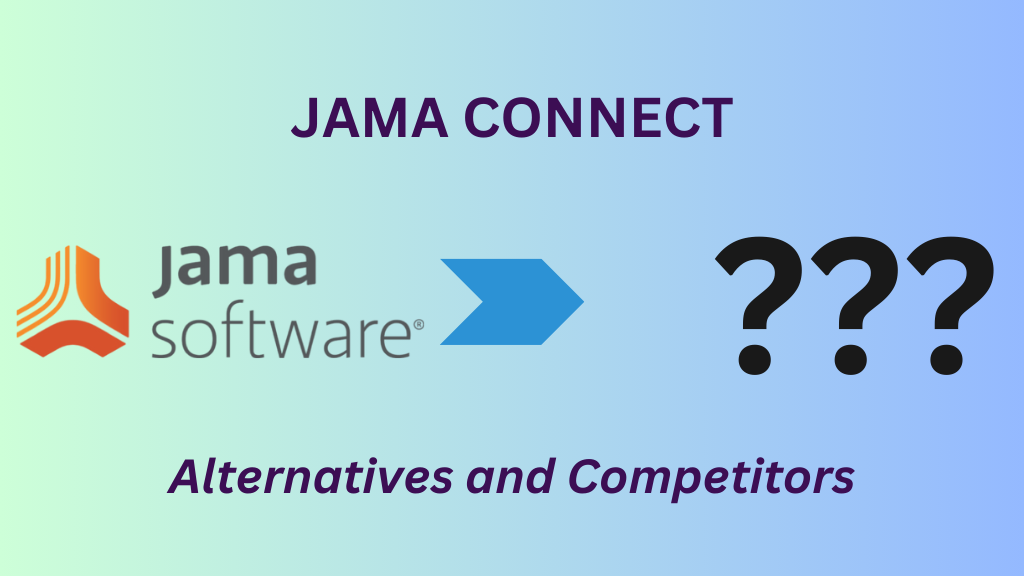
Top Jama Connect Competitors & Alternatives
- Arunabh Satpathy
- December 16, 2024
- 9 minutes
Looking for a Jama Connect alternative? This guide compares top competitors to help you find the best requirements management tools for your organization. Whether you prioritize cost, simplicity, or advanced AI features, we’ve got you covered.
This post explores the top Jama alternatives that save costs, have easy-to-use interfaces, and use cutting-edge innovations like AI.
Table of Contents
1. Why Switch to a Jama Connect Alternative?
While Jama Connect is a well-known requirements management tool. It offers robust collaboration, traceability, and customizable reporting. However, many organizations are seeking alternatives for its weaknesses – particularly complexity, cost-inefficiency, and lack of robust AI tools:
- Complexity: Its complex UI may increase onboarding time and increase errors among smaller teams, even small teams in larger organizations. Smaller teams tend to move fast, and tool complexity blunts a key advantage these teams have.
For instance, a G2 review says, “There is so much structure and button clicking to create and reorganize items, that I simply just use excel, word, or google docs[sic] for the first few rounds of requirements development.” - Customization Limitations: While Jama is generally customizable, users can face constraints in adapting workflows to niche needs. According to an industry review, “It only allows you to customize a few aspects of the process. However, the rest of the features are pre-defined.”
- High Cost: Investing in Jama Connect can be a significant barrier for small to mid-sized organizations. Large organizations may be able to afford Jama, but the complexity and customization continues to be a barrier, and so the value received remains a question
- Lack of Robust AI: While Jama offers the Advisor for an NLP-powered suggestions to improve requirements quality, it is limited in its capabilities relative to industry-leading AI solutions which offer a much richer set of features to massively increase employee productivity and efficiency.
2. How do you Evaluate Jama Connect Competitors and Alternatives?
When selecting a high-quality requirements management tool, consider these 6 key factors:
i. Understand Your Company’s Needs
Start by identifying your organization’s key challenges (e.g., traceability, collaboration, or compliance). In compliance-driven industries, selecting a requirements management tool demands strict adherence to sector-specific regulatory standards like HIPAA and ASPICE. Finally, evaluate the total cost of ownership, including software costs and IT support.
ii. Key Features to Look for in Jama Alternatives
For a requirements management replacement for Jama Connect, some key features to consider are:
- AI Capabilities: According to a Nielsen study, AI-powered tools boost employee productivity by 66%, helping teams streamline documentation and reduce project delays. Getting a Jama Connect alternative with robust AI capabilities is increasingly a must.
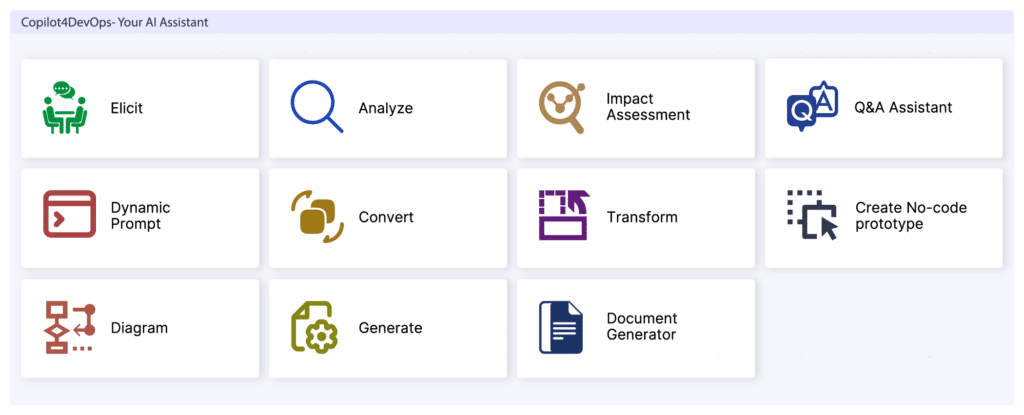
- Traceability: Accurately tracking links between requirements speeds up projects by 24%. Any tool you invest in should have two traceability matrices at least. Learn about how to select the right requirements traceability tools in our detailed guide.
- Collaboration: Real-time requirement harvesting and review tools help keep your project on track.
- Document Management & Version Control: Document creation, management, and versioning tools turn your requirements management solution into a single source of truth.
- Security: With the growth of security risks, any requirements management tool should meet high standards, e.g., native Microsoft Entra ID integration, advanced vulnerability scanning, and multi-layered compliance certifications.
iii. Ensure Workflow Integration
Software connectors and integration tools of the sort offered by Jama are inherently more vulnerable than native integration with popular ALM software like Azure DevOps and Microsoft Office. Pick a tool that offers native integration instead.
iv. Prioritize Ease of Use and Flexibility
A user-friendly tool reduces time spent on training and boosts efficiency. Pick a tool with streamlined traceability, documentation, and automation tools. A good alternative to Jama Connect should also adapt to methodologies like Agile and Waterfall.
3. What are the Top Jama Connect Alternatives for 2025?
i. Modern Requirements4DevOps (Top Pick)
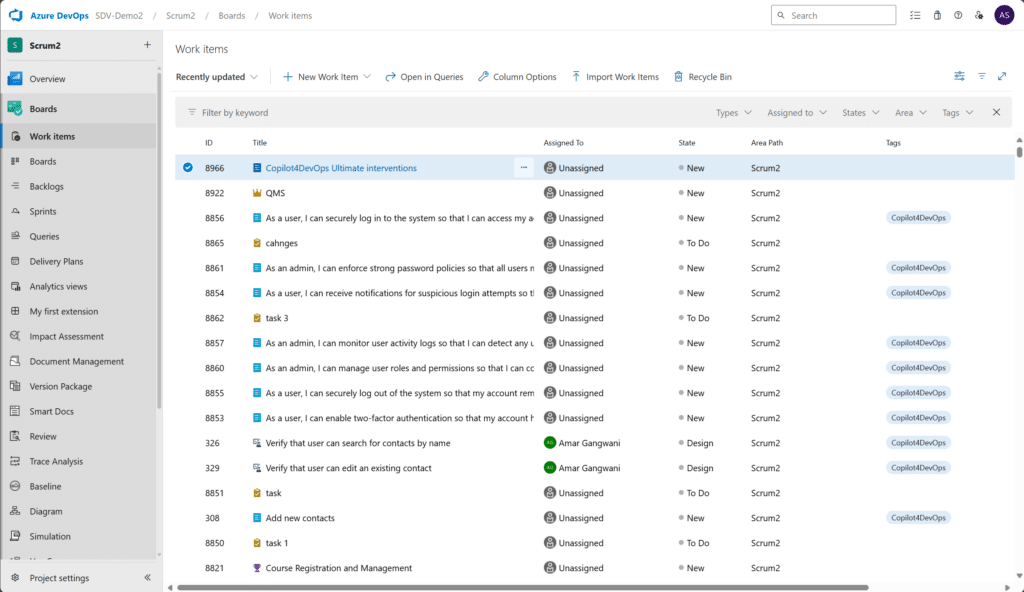
Modern Requirements4DevOps is an award-winning requirements management tool specializing in a streamlined requirements engineering process. Here’s why it excels:
- Seamless Integration: You can manage requirements, tests, and traceability directly within Azure DevOps, creating a single source of truth.
- Ease of Use: Requirements workflows are automated and intuitive with Smart Docs, end-to-end traceability, baselining, and other tools.
- AI Requirements Management: The groundbreaking Copilot4DevOps helps teams generate increased employee productivity and efficiency with high-quality requirements, test cases, pseudocode, impact analysis, documentation and more within Azure DevOps. This AI addition is also an award-winning automation feature.
- Cost-Effective: Offers enterprise-level features at a competitive price.
- Compliance: Modern Requirements is well suited for highly regulated industries like medical devices (including 21 CFR Part 11), healthcare, defense, automotive, and more.
- Security: Modern Requirements inherits Azure DevOps’ best-in-class security features like Microsoft Entra ID integration, multi-factor authentication, role-based access control, secret scanning, dependency scanning, with compliance certifications like ISO 27001 and HIPAA. Its AI component also inherits the security protocols of Azure AI and OpenAI.
- Unique Selling Points:
- AI leadership with Copilot4DevOps
- Two built-in traceability matrices
- Baselining and version control
- Smart Docs for document creation within Azure DevOps
- Document Management System for uploading, downloading, versioning, and foldering.
- Impact Assessment: Assess the impact of changes on one work item on other work items. This option is also available through AI DevOps tool Work Item AI Solution for Azure DevOps – Copilot4DevOps Plus.
Customers confirm this with multiple reviews on several platforms. According to an IT leader and customer on Software Reviews: “It is easy to use and easy integrate with other tools, moreover it has widgets to add which is very good for any analytics we want to have for the track.”
Some recent awards won include the 2024 Data Quadrant Gold Medal and the Champion Award for Emotional Footprint from Software Reviews and a national award on AI automation for 2023
ii. Orcanos
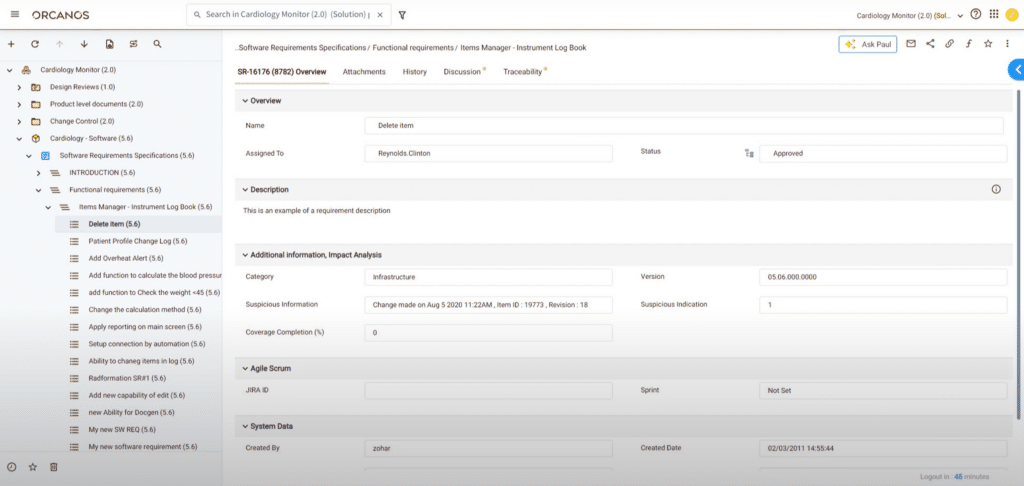
This is a well-known solution that integrates requirements management with quality control and compliance tracking. You can use it in regulated industries like medical devices. It has several unique selling points like:
- Risk management tools
- CAPA and audit trails
However, it has some weaknesses like limited integrations, bugs, and technical service.
iii. Aligned Elements
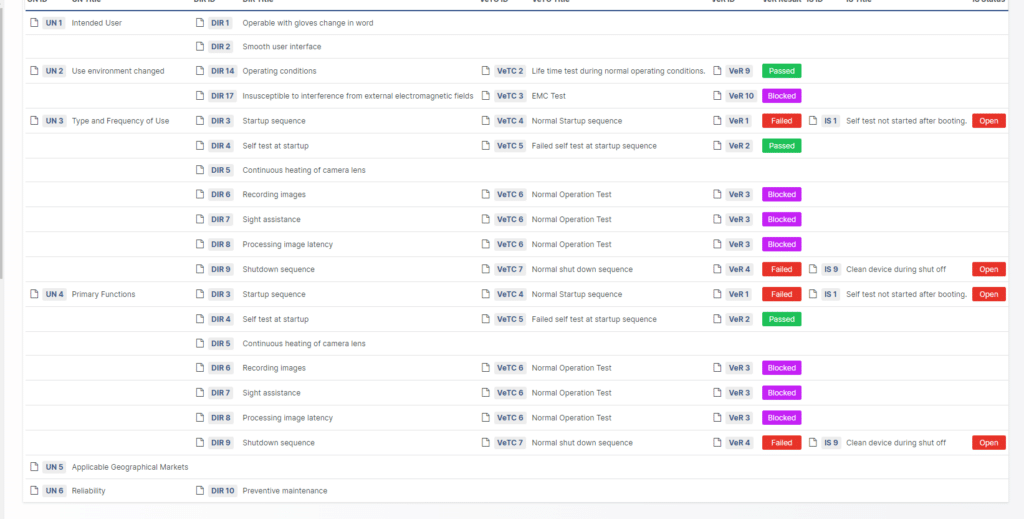
Aligned Elements specializes in providing an ALM system specifically for medical device development. It is suitable for medical device companies that want to streamline compliance and enhance documentation quality. It has a few noteworthy features:
- Design control management, which helps in creation and maintenance of development documentation
- Risk management tools which incorporate risk assessments and mitigation into the development process.
However, it has several noted weaknesses like being hard to set up and use. Further, tools like Modern Requirements4DevOps are already used in the medical device industry through Azure DevOps and inherit unique features like Azure Health Data Services and connections to Microsoft’s IoT solutions for healthcare.
iv. Helix ALM
- Modularity allows users to have either requirements management, test case management, or issue management.
- It has a strong array of integrations into other tools.
However, its integrations share the weaknesses of most software connectors and integrations that aren’t as robust as native integration. Further, it has flaws like being difficult to use, particularly its clunky document editing features.
v. Visure Requirements ALM Platform
Visure offers a flexible platform for requirements and risk management, ideal for safety-critical systems. It is known for its:
- Open-source API for workflow automation
- Extensive integration list with various external tools
However, workflow automation is best handled by an award-winning AI requirements management tool with a much larger feature set than Visure. And integration tools come with their own weaknesses that cannot match native integration.
Further, Visure has some noted issues like a difficult interface and complex setup which hurts fast-moving companies that need a plug-in-and-go system. It also has a drop in performance when handling more than 50,000 items.
vi. IBM DOORS
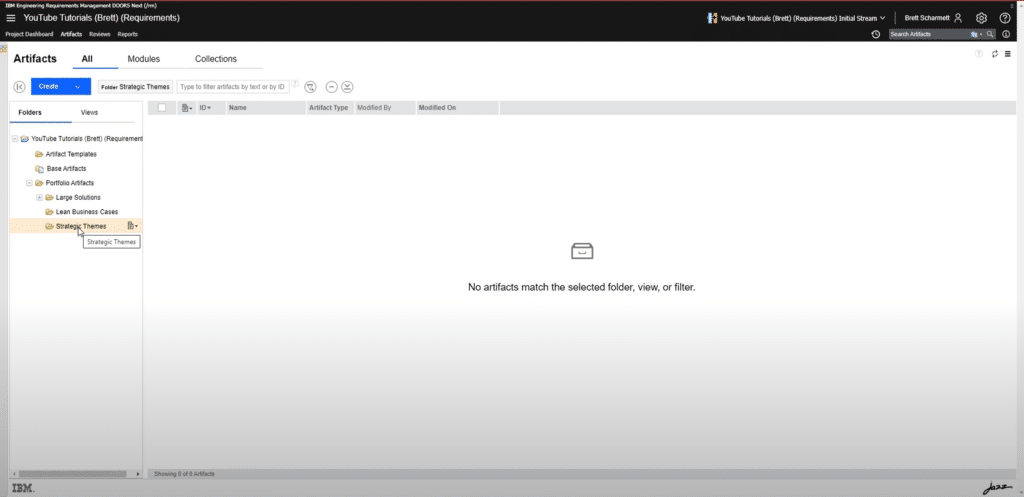
This is a popular staple in requirements management and offers requirements management tools tailored for industries like aerospace, defense, and automotive. It is a scalable option for large enterprises managing complex requirements. It is known for:
- Integration into the IBM suite of tools and customer service
- It can scale to large projects with relative ease
However, it has several flaws. Its design dates to the 1970s and therefore lags newer systems like Modern Requirements4DevOps system architecture, user interface, customization and more. It is also hard to integrate with third-party test and project management tools.
4. How Does Jama Connect Compare?
Tool | Ease of Use | Cost | Downsides | |
|---|---|---|---|---|
Modern Requirements4DevOps | High | Competitive | Purpose-built for seamless integration within the Azure DevOps ecosystem | 8.6 |
Jama Connect | Medium | High | Complex UI, high cost, customization limitations. | 8.5 |
Orcanos | Medium | Medium | Limited integrations; reported system bugs; potential delays in technical support response. | 7.7 |
Aligned Elements | Medium | High | Complex setup and configuration; steep learning curve; performance issues with large datasets. | 8.4 |
Helix ALM | Medium | High | Non-intuitive user interface; limited text editing functionality; high licensing costs. | N/A |
Visure | Medium | Medium | Dated interface; complex initial configuration; performance decline with over 50,000 items. | N/A |
IBM DOORS Next | Low | High | Steep learning curve; outdated user interface; high cost; performance issues with large datasets. | 6.5 |
5. Why Choose Modern Requirements4DevOps?
Modern Requirements4DevOps offers unparalleled integration, usability, and value. In direct competition with Jama Connect, Modern Requirements has come out on top. It consistently earns top scores in emotional footprint and user satisfaction, such as its 2024 Data Quadrant Gold Medal and the Champion Award for Emotional Footprint.
Its groundbreaking AI tool Copilot4DevOps also offers the most robust, award-winning AI requirements management solution on the market.
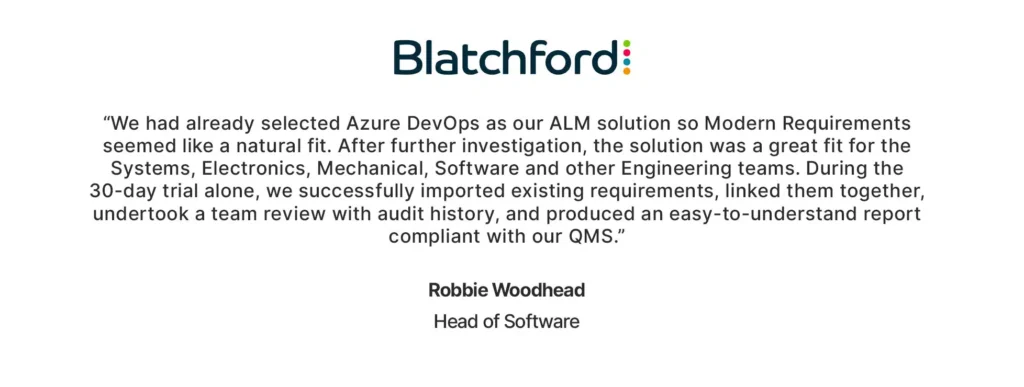
6. How to Migrate from Jama?
Here’s how to export your data from Jama to Modern Requirements4DevOps:
- Export Data from Jama using its export functionality to extract your requirements data. You can export data to Word or Excel in List View, Reading View, or Document View with the advanced filters or the Explorer Tree.
- Prepare Data for Import in a compatible format for Modern Requirements4DevOps. This may involve formatting the data in Excel. With Word Import, you can format and import those documents to Modern Requirements without losing data.
- Verify and organize imported data to ensure accuracy. Organize the requirements within Azure DevOps for traceability and collaboration, leveraging Modern Requirements4DevOps’ features and support team.
- Train your team to it with Modern Requirements4DevOps’ functionalities, ensuring a smooth transition and effective utilization of the new system. Use Modern Requirements’ extensive library of support content.
7. The Best Jama Alternative and Competitor
Among all of Jama’s competitors, Modern Requirements4DevOps distinguishes itself with native integration, advanced AI, robust features, and ease of use. For teams seeking cost-effective, innovative, and efficient requirements management solutions, exploring alternatives like Modern Requirements is a game-changer.

